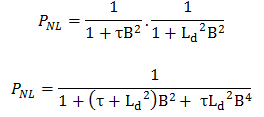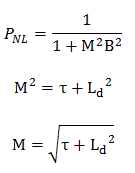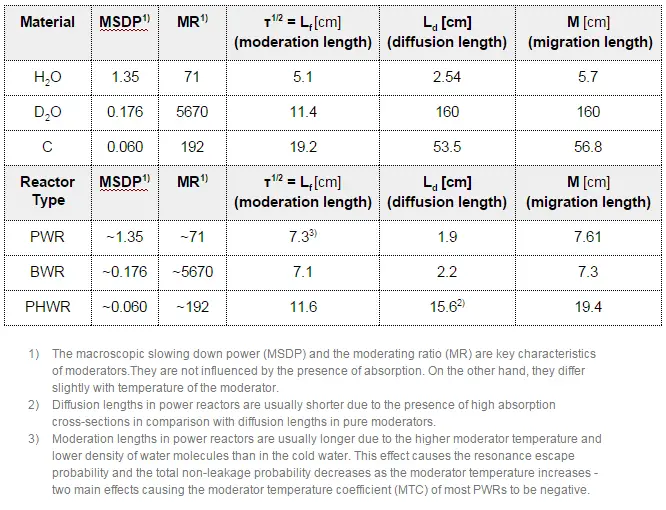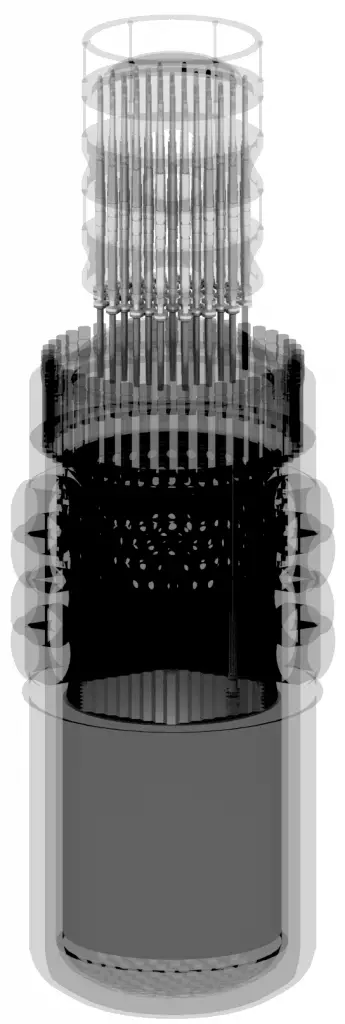Reflected Reactor
In previous chapters (nuclear chain reaction), it was derived that leakage of neutrons from the system significantly influences the criticality of a reactor. For thermal reactors, two variables are defined to describe the leakage process:
The fast non-leakage probability (Pf) and the thermal non-leakage probability (Pt) may be combined into one term that gives the fraction of all neutrons that do not leak out of the reactor core. This term is called the total non-leakage probability and is given the symbol PNL.
We can rewrite this equation without a substantial loss of accuracy for large reactors simply by replacing the diffusion length Ld and the fermi age τ with the migration length M in the one group equation. The term B4 is very small for large reactors, and therefore it can be neglected. We may then write.
where M is the migration area (m2), the migration length is defined as the square root of the migration area. As can be seen, the total non-leakage probability of large reactors is primarily a function of the migration area.
- The neutron flux distribution is “flattened“, i.e., the ratio of the average flux to the maximum flux is increased. Therefore reflectors reduce the non-uniformity of the power distribution.
- Because of the higher flux at the edge of the core, there is much better utilization in the peripheral fuel assemblies. In the outer regions of the core, this fuel now contributes much more to the total power production.
- The neutron reflector scatters back (or reflects) into the core many neutrons that would otherwise escape. The neutrons reflected into the core are available for a chain reaction. This means that the minimum critical size of the reactor is reduced. Alternatively, if the core size is maintained, the reflector makes additional reactivity available for higher fuel burnup. The decrease in the critical size of the core required is known as reflector savings.
- Neutron reflectors reduce neutron leakage, i.e., to reduce the neutron fluence on a reactor pressure vessel.
- Neutron reflectors reduce a coolant flow bypass of a core.
- Neutron reflectors serve as a thermal and radiation shield of a reactor core.
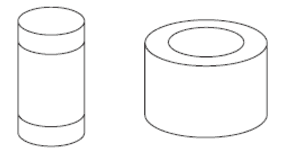 In general, neutron reflectors may be axial and radial, but, for example, in pressurized water reactors, the axial reflector does not form any special device. The neutrons are reflected by the core inlet and outlet coolant. On the other hand, common water volume cannot be used as a reflector in a radial direction because it is of the highest importance to maintain high flow rates in the core and not bypass fuel assemblies. Therefore the radial neutron reflectors are installed in PWR and BWR reactor cores. The design of such radial neutron reflectors may vary, but we can distinguish between two basic types:
In general, neutron reflectors may be axial and radial, but, for example, in pressurized water reactors, the axial reflector does not form any special device. The neutrons are reflected by the core inlet and outlet coolant. On the other hand, common water volume cannot be used as a reflector in a radial direction because it is of the highest importance to maintain high flow rates in the core and not bypass fuel assemblies. Therefore the radial neutron reflectors are installed in PWR and BWR reactor cores. The design of such radial neutron reflectors may vary, but we can distinguish between two basic types:
Reflector Savings
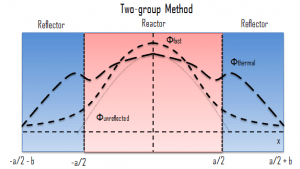
The neutron reflector scatters back (or reflects) into the core many neutrons that would otherwise escape. The neutrons reflected into the core are available for a chain reaction. This means that the minimum critical size of the reactor is reduced. Alternatively, if the core size is maintained, the reflector makes additional reactivity available for higher fuel burnup. The decrease in the critical size of the core required is known as reflector savings. The concept of reflector savings is very important in many reactor calculations.
It can be derived that there is a difference in the reflected and unreflected critical dimensions of a reactor. This difference is known as the reflector savings, it is denoted by δ, and for infinite slab reactor, it is determined by:
according to this formula, the reflector savings as a function of the reflector thickness T can be calculated. As can be seen, reflector savings are a function of the thickness, and the reflector savings has a finite value for an infinitely thick reflector, where:
This can be interpreted as follows: when the neutron reflector has a thickness of a few diffusion lengths, the probability that neutrons that have come into the outer shell of the neutron reflector are scattered back to the core is very small, so that an even thicker reflector hardly yields extra savings.
These effects, however, become less significant as the size of the reactor, measured in migration lengths, increases. The reflector savings amounts to a smaller fraction of the core dimension as its size becomes larger.
Adding a reflector to a reactor allows either the volume of the reactor or the requirements on fuel to be reduced or some combination of the two. If the reflector savings is known, the calculation of the critical dimensions of a reflected reactor needs only the solution of the bare reactor, which is a simpler problem. For example, it is only necessary for the cylindrical reactor to determine the bare critical radius R0 and the reflected radius is simply R = R0 – δ, where R0 is the critical diameter of a bare reactor.
Reflector Thickness
Logically, the reflector coefficient (albedo) increases as the reflector thickness increases. But how thick should a reflector be? From an engineering point of view, reflectors are, of course, limited by certain reactor designs (e.g.,, by the width of the reactor pressure vessel). But, in general, very little is to be gained by increasing the thickness of the reflector beyond a value of 2L (2 x diffusion length).
With H20, a thickness of 2L is only about 5 cm, whereas, for D20, it is about 300 cm. It would require a considerable amount of D20 to extend the moderator by 300 cm since this additional D20 is being placed on the outside of the core. From these values, it is obvious the neutron reflector plays a crucial role in heavy water or graphite reactors, in which the neutron leakage is higher than in LWRs.
Reflector Effects on Reactor Kinetics
Reflector savings are not the only significant effect of the neutron reflector in reactor cores. The neutron reflector also influences the mean generation time and therefore influences the reactor kinetics.
In the effect of a reflector on reactor kinetics, we are concerned with the time the neutrons spend in the reflector before returning to the core. In a thermal reactor, a reflector is generally chosen to help moderate the neutrons. Consequently, the neutrons that leak out of the core as thermal, epithermal, and fast neutrons are reflected into the core as thermalized neutrons.
Note that the prompt neutron lifetime, l, is the average time from a prompt neutron emission to its absorption (fission or radiative capture) or its escape from the system. In an infinite reactor (without escape), prompt neutron lifetime is the sum of the slowing downtime and the diffusion time.
l=ts + td
In an infinite thermal reactor ts << td and therefore l ≈ td. The typical prompt neutron lifetime in thermal reactors is on the order of 10−4 seconds. The neutron lifetime with delayed neutrons, ld, is the weighted average of the prompt generation times and a delayed neutron generation time. The delayed neutron generation time, τ, is the weighted average of mean precursor lifetimes of the six groups (or more groups) of delayed neutron precursors.
In view of the time delay in the process of diffusing in and out of the reflector, the kinetics effect of a reflector can be thought of as an effective increase in the neutron lifetime in the core under steady state conditions, or as an additional delayed neutron precursor under transient operations.
